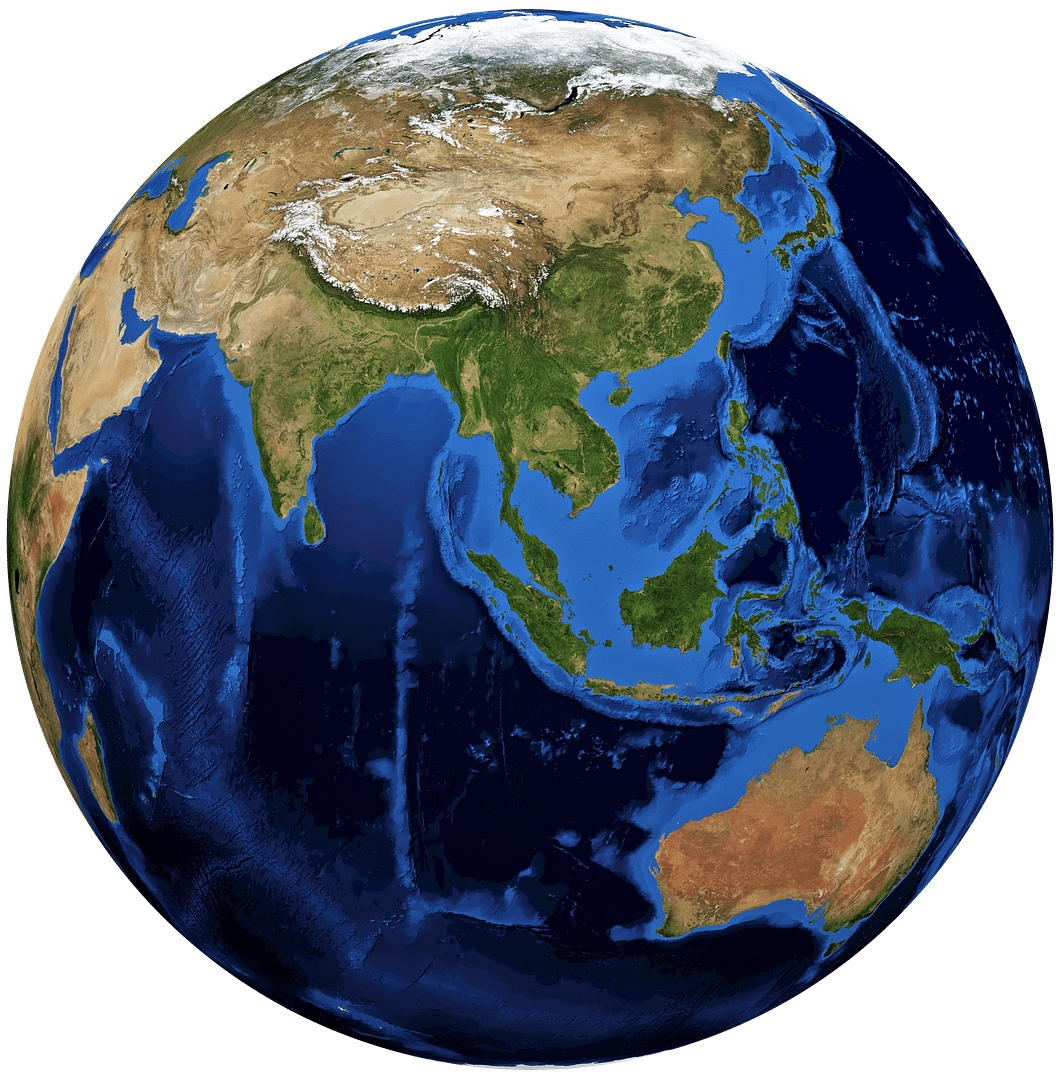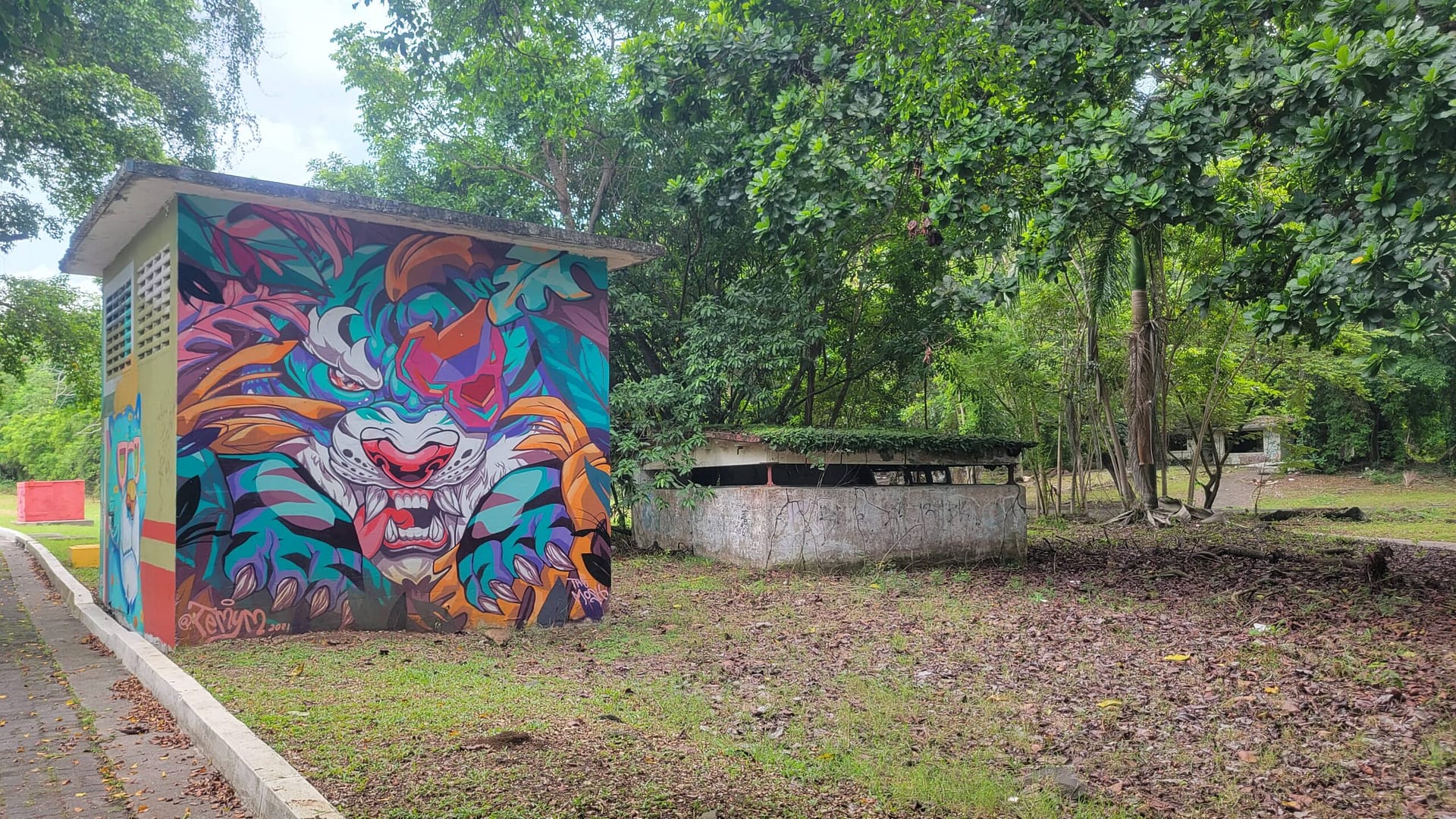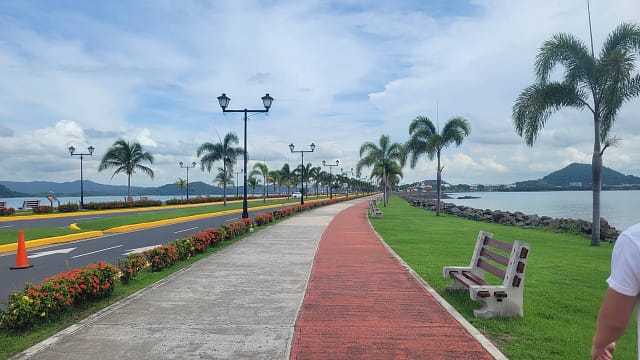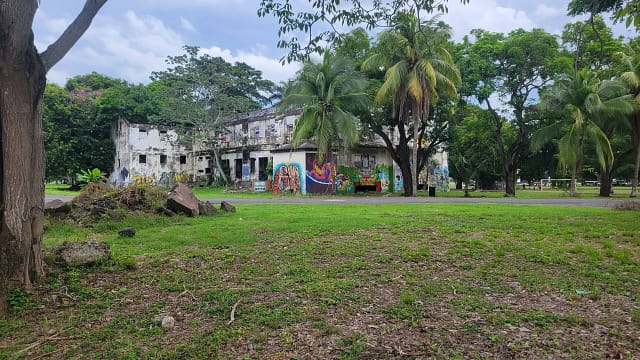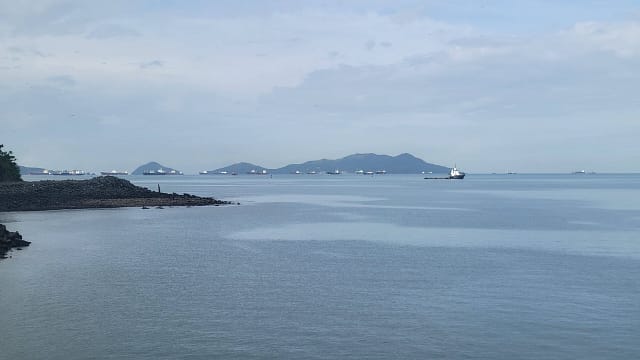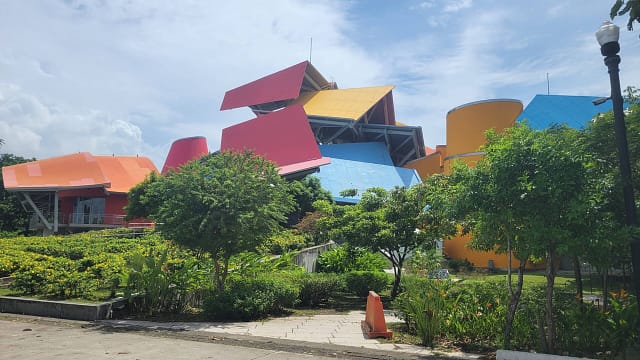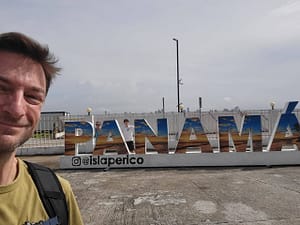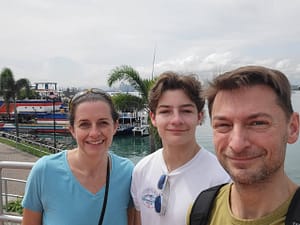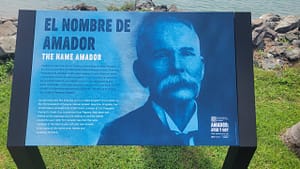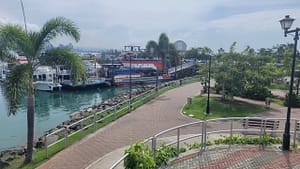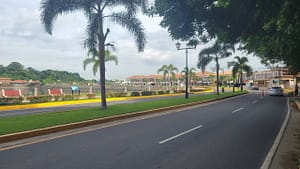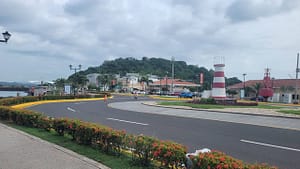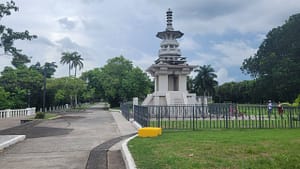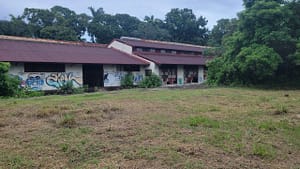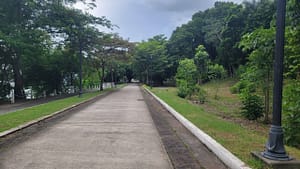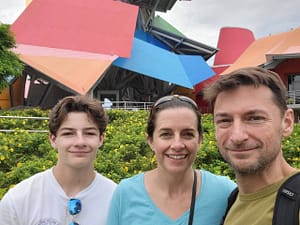Amador Causeway is one of the top attractions referenced both by Panama Tourism as well as virtually every other tourism related website. They tend to focus on shopping, bike rentals, and generally the more touristy activities. This isn’t our thing.
Instead, we loved the Amador Causeway for the walk, the views, and more importantly as a mechanism for understanding Panama history and its strategic importance to the United States.
History of Fort Amador and Fort Grant
What’s known as the Amador Causeway today is really a collection of islands, ending with Flamenco Island. Rocks and debris from the United States construction of the Panama Canal were dumped between the islands creating a large breakwater connecting land-side Fort Amador with part of Fort Grant, made up of a number of islands including but well beyond Flamenco island. These U.S. Military installations initially existed to protect the Panama Canal.
In time, and for political reasons, the name Fort Grant (as in American Ulysses S.) was abandoned in favor of Fort Amador (as in First Panamanian President Amador).
Today the Amador Causeway has a great walking path alongside the roadway. It connects all the way to Flamenco Island and features tourist shopping and dining opportunities, a cruise ship terminal, a marina, and serves as departure point for numerous ferries to nearby islands.
For our purposes though, Amador Causeway provides a great opportunity to stroll the 2.5 miles, reading signs along the way describing childhood experiences of famous Panamanians who experienced the causeway during U.S. Military control. The signs also share insights about life during and after its transition to Panama’s control. They describe things like visiting the golf course that once existed at Fort Amador or simply driving the road as a family when it was much narrower than it is today.
The Panama Canal
Looking toward the ocean from the Amador Causeway you get a great sense of the importance of the Panama Canal. Dozens of ships, anchored in the water to the south and east, sit waiting their turn to pass through from the Pacific to the Atlantic. Just think of the amount of dry bulkers (think grains or anything loaded in bulk), fuel and oils ships, and container ships waiting to transit at any one time. Then consider that 73% of those ships are going to or coming from the United States with $2 Billion in tolls collected annually. Then you get a sense of the monumental importance of the canal to both Panama and the United States.
Biomuseo, the Smithsonian, and Biodiversity and Panama History
Just as the Amador Causeway is full of things to learn, so is the Biomuseo. We spent about 2 hours going through the exhibits learning that the isthmus of Panama formed relatively recently, connecting North and South America. The formation allowed for a great exchange of people and animals between the two continents and that the sea life differs between the Atlantic/Caribbean side from that of the Pacific side. We also learned that, while the country is a bit smaller than South Carolina, it has many times more species of plants and animals than the entire United States.
It should be no surprise that Panama is of major importance to U.S. (and global) drug companies seeking new compounds that could one day become yet another drug (aka miracle cure to patent and sell). To support this research the U.S. and Smithsonian Institute have numerous research facilities across the country including on Barro Colorado Island along the Panama Canal (created when Gatun Lake was formed) as well as Punta Culebra along the Amador Causeway. Whether you take a cynical view that modern medicine is more a sick care system, or view these new drugs as actually improving our lives, the U.S. has a massive interest in preserving the environment and rain forests as an instrument of new drug research – setting aside the importance with respect to climate change.
We Should Know More About Panama History
Our son, correctly in our view, asks why he hasn’t learned more about Panama and its history in school. Alas, we could come up with so many reasons – history is written by the victors, history of colonialism, manifest destiny, the American way of life and the use of the military to support it. Suffice to say that Panama’s history is highly complex. The location of Panama as a mixing pot of plants, animals, and ancient civilizations, then the influences of the colonial powers and, more recently, the U.S. role in the separation of Panama from Columbia and the building of the Panama Canal itself. All in all, a stroll down the Amador Causeway, if you take the time to think deeply, is a great opportunity to learn more about the history and influences that created modern Panama.
